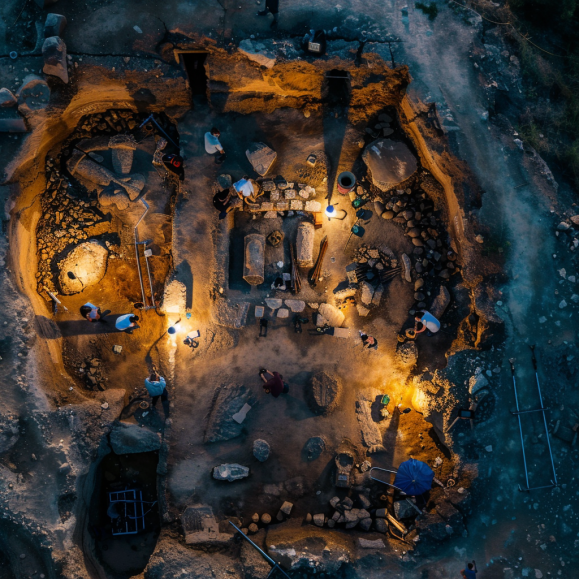Introduction
Archaeology often unearths mysteries that reshape our understanding of history. One such enigma was the discovery of a high-status tomb in La Almoloya, Spain. This Bronze Age burial site contained the remains of a man and a woman adorned with lavish silver artifacts, suggesting their elite status. Recent studies have illuminated the woman’s critical role in her society, offering fresh perspectives on gender dynamics and social structures of ancient European cultures.
The Discovery of the High-Status Tomb
Located in La Almoloya, the tomb was unearthed in a region rich with Bronze Age relics. Archaeologists were initially drawn by the opulence of the burial, marked by intricately designed silver artifacts and well-preserved remains. The tomb’s grandeur hinted at the elevated status of its occupants.
Exquisite Silver Artifacts
The silver artifacts found within the tomb are remarkable for their craftsmanship and variety. These included intricately designed diadems, bracelets, rings, and other ornaments, each piece showcasing exceptional artistry. The quality and quantity of these items underscore the high social standing of the individuals interred.
The Role of Women in Bronze Age Society
The tomb’s contents provided pivotal evidence about the societal roles of women in Bronze Age Europe. The female occupant, adorned with the majority of the artifacts, appeared to hold significant power and influence. This challenges the traditional narrative of male-dominated ancient societies.
Evidence of Political and Economic Leadership
Recent studies suggest that the woman buried in La Almoloya was a key political and economic figure. Analysis of the artifacts and the burial context points to her as a leader, possibly wielding authority over trade, governance, or both. This finding is revolutionary in understanding the scope of women’s roles in ancient governance.
Challenging Previous Assumptions
The La Almoloya tomb findings upend long-held assumptions about gender roles in ancient European cultures. Previously, it was believed that men predominantly held positions of power. However, this discovery indicates that women could attain and exercise significant authority.
Insights into Bronze Age Social Structures
The tomb not only reveals the individual status of the occupants but also provides broader insights into the social hierarchy and cultural practices of the time. The presence of such a high-status woman suggests a complex and possibly more egalitarian social structure than previously thought.
Cultural Significance of Burial Practices
The elaborate nature of the tomb and its contents reflects the cultural values and beliefs surrounding death and the afterlife in Bronze Age Spain. It underscores the importance of social status and the reverence for elite individuals within the community.
Implications for Archaeological Research
This discovery has far-reaching implications for archaeological research. It prompts a reevaluation of other burial sites and artifacts, encouraging a more nuanced interpretation of gender roles and social dynamics in ancient societies.
Technological Advances in Archaeology
The insights gained from the La Almoloya tomb were made possible through advanced archaeological techniques. Innovations in DNA analysis, radiocarbon dating, and artifact conservation played a crucial role in unraveling the tomb’s mysteries.
Future Research Directions
The findings from La Almoloya open new avenues for research. Future studies will likely focus on exploring similar high-status burials across Europe to better understand the extent and nature of women’s leadership roles in ancient societies.
Conclusion
The high-status tomb in La Almoloya, Spain, has provided a wealth of information that challenges our understanding of ancient European societies. The revelation of a powerful female leader’s role reshapes historical narratives and underscores the complexity of Bronze Age social structures. This discovery not only honors the individuals interred but also enriches our collective historical knowledge, prompting further exploration and discovery.

